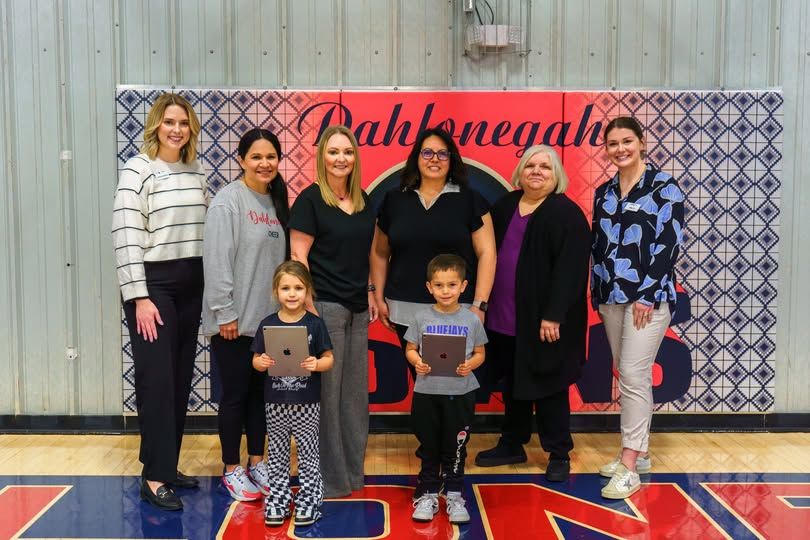
Thursday, April 10, 2025
In the rolling hills of Adair County, Oklahoma, Dahlonegah Public School is embracing classroom technology with help from Ozarks Electric Cooperative and OzarksGo, who recently donated 35 iPads to the rural elementary school, planting seeds of opportunity for the community’s youngest learners.
“As the emphasis on digital literacy increases, integrating iPads into the classroom will allow us to prepare our students for success in an increasingly digital world,” said Steven Cain, the school’s superintendent. “However, we also face challenges in providing modern educational resources, and this is why it is essential to incorporate technology like the iPads.”
Electronic learning tools could help improve student learning, but such resources have previously been out of reach due to financial constraints, Cain said. The U.S. Census Bureau’s Small Area Income and Poverty Program reports the area’s poverty threshold at 27.1%. All of the district’s students qualify for free and reduced-price meals, and 35% require special education services.
“At Ozarks, our purpose is powering and connecting communities,” said Jessica Greenhaw, Community Outreach and Public Relations Coordinator at Ozarks Electric. “ When presented with an opportunity to support Dahlonegah Public Schools, it was our pleasure to be able to help with their mission to integrate more digital tools into the classroom. We are committed to investing in the communities we serve and understand access to technology is essential in bridging the digital divide.”
With the donation of iPads, the school district is taking a major step toward bridging the digital divide. The devices will be used in early childhood classrooms, particularly in pre-K, where students are just beginning their educational journeys.
Teachers plan to integrate the tablets into daily instruction, using interactive apps to support literacy, math skills, and problem-solving skills. With training and support, educators will also use the devices to supplement classroom lessons, track student progress, and nurture creativity and confidence.
"These apps can support different learning styles, providing visual, auditory, and kinesthetic learners with the tools they need to succeed," Cain said. "The iPads will bridge the gap between traditional and modern educational tools, ensuring that all students have access to the technology that is integral to academic success in the 21st century."
For a school devoted to the well-being of its students, these iPads represent more than new equipment—they symbolize a shared commitment to community, education, and a brighter future for all students.